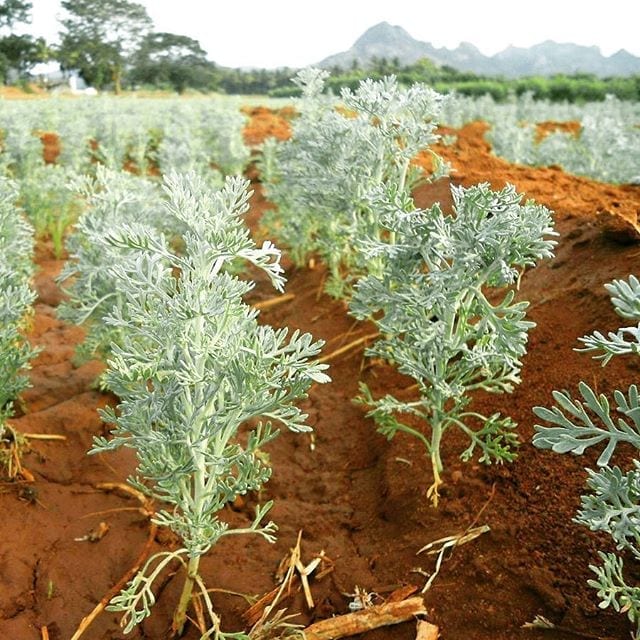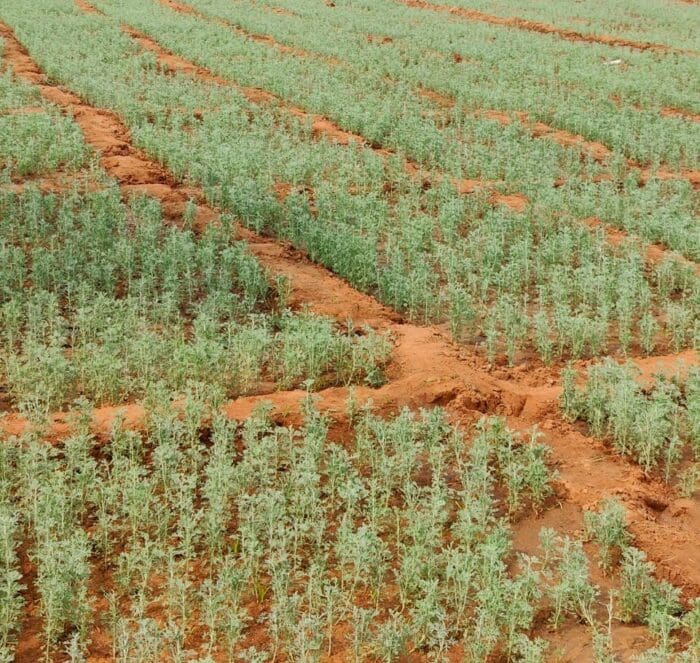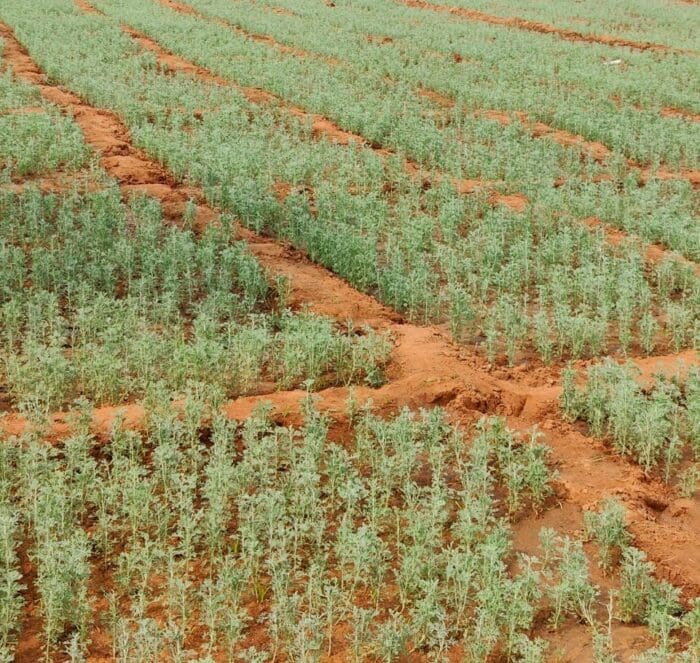Davana Oil is mainly produced in the Karnataka state of India, where the botanical is cultivated for its aromatic leaves and flowers. The herb is typically grown from seed via nurseries and transplanted to fields 6-8 weeks after the initial sowing. All davana farms require fertilizer (mainly potassium) and light irrigation daily, as well as hand-weeding two to three times every 10 days.

To achieve the highest essential oil yields possible, davana harvests must begin when at least half of the plants are blooming (mid-February), with the harvest continuing until the full bloom (beginning of March). Once the harvest period has ended, the plant material is dried under the sun and distilled immediately afterwards within local distillation units. The herbage yield is typically around 12 to 15 MT per hectare, with an oil yield of 0.2% (12 to 13 kg per hectare).
This year, Davana Oil production in India was delayed due to poor weather conditions, and many plantations lost their seeds during the initial planting phase in November. Distillation of davana has only recently concluded in Karnataka, with the total amount of essential oil production landing somewhere in the 7 MT range. This is lower than the region’s average quantity of 12-15 MT and is indicative of a few underlying conditions surrounding davana production.

Prices for Davana Oil opened high, but quality and lack of demand have caused prices to stabilize at levels similar to last year. Due to the current market conditions, davana farmers are becoming increasingly discouraged to plant new material, despite pressure building on them to commit to the next crop sowing scheduled for November.
The recent price fluctuations surrounding Davana Oil are mainly caused by uneven quality assessments across the stocks available. Some farmers have attempted to incentivize purchasers by reducing their prices for current material, though the overall price of Davana Oil is still at comparable levels to last year. We will continue to provide more updates on davana production as the next sowing season approaches.
